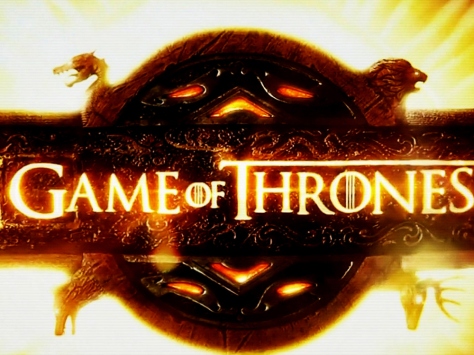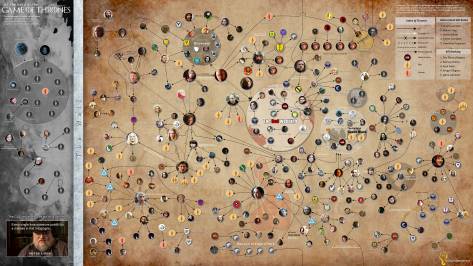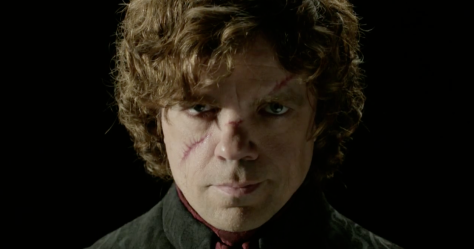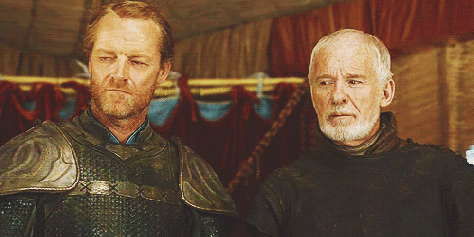 This is a bit of shameless puffery on the back of the Game of Thrones (GoT) season finale tomorrow. But I make no apologies: GoT offers a number of useful lessons for those who want to make the customer experience better.
This is a bit of shameless puffery on the back of the Game of Thrones (GoT) season finale tomorrow. But I make no apologies: GoT offers a number of useful lessons for those who want to make the customer experience better.
1 What customers like is not necessarily what customers need.
 GoT kills off lots of people, including many characters we like. The death of the Red Viper two weeks ago at the end of Tyrion’s trial by combat has left fans reeling, with howls of outrage echoing across the internet.
GoT kills off lots of people, including many characters we like. The death of the Red Viper two weeks ago at the end of Tyrion’s trial by combat has left fans reeling, with howls of outrage echoing across the internet.
But this is, of course, one of the reasons we keep watching: because we know that no-one is safe. We may not like it when a character dies, but it makes the show more compelling.
In business, also, we need to concentrate on giving people what they need, and sometimes this comes at the cost of what we want. Virgin media, for example, has designed its business to deliver broadband services at competitive prices. When something goes wrong, they will do their best to fix it. Drop them an email and they will respond quickly.
But not by phone.
Apparently there are numbers with which to contact Virgin media by phone for support, but I’ve never found them. And I understand why. It would add a layer of complexity and cost which would compromise their business model. Virgin gets it. They give us what we need, but not everything we want.
2 How you do it matters as much as what you do.
 GoT is magnificently shot. Recent scenes have featured Tyrion languishing in the dungeon while awaiting trial. Typically, these scenes have opened with a slow shot revealing Tyrion lit from the side, one half of his face in light, the other in darkness; a perfect photographic study and (I daresay) a visual metaphor for his uncertain fate between light and darkness.
GoT is magnificently shot. Recent scenes have featured Tyrion languishing in the dungeon while awaiting trial. Typically, these scenes have opened with a slow shot revealing Tyrion lit from the side, one half of his face in light, the other in darkness; a perfect photographic study and (I daresay) a visual metaphor for his uncertain fate between light and darkness.
Detail.
Richness.
The GoT team are plainly thinking not just of getting through the words that are on the pages of the script, but on how the scene is to be experienced by the viewer.
A relatively recent phenomenon is the rise of YouTube videos which show the unwrapping and unpacking experience of new pieces of (usually) technology. Luxury goods companies have known this for ever (jewellery is always sumptuously packaged). Apple is the tech company that pioneered taking this thinking to their products, so now their competitors are doing so as well.
Why? Because packing things nicely makes unpacking them a pleasurable part of the customer experience? Yes, but also because it shows that they care about the details. ‘If they think this much and put so much effort into packaging my product,’ thinks the consumer, ‘the product must be good. They must be good.’
3 Inject some personality and, if possible, fun.
GoT is many things, but fun? Well…yes.
Earlier this season, a Meereenese rider was challenging Daenerys’ champion. He shouted an intimidatory, bloodcurdling set of insults in one of the invented GoT languages, Low Valyrian. What he was saying was, in truth, borrowed from Monty Python and the Holy Grail, when the French knight pours scorn on King Arthur from the castle walls, saying things like: “Your mother was a hamster and your father smelt of elderberries.”
 Was doing so essential for the customer experience? Not a whit. But fun and enjoyable for the cast, crew and writers (and now the fans)? Of course.
Was doing so essential for the customer experience? Not a whit. But fun and enjoyable for the cast, crew and writers (and now the fans)? Of course.
As, for example, Virgin Group demonstrates, if your employees enjoy their jobs then your customers will have a better experience. Happy employees = happy customers.
4 Use lean storytelling:
make your story do some work
A GoT season is only ten episodes long. For those of us raised on television seasons that last thirteen or twenty-six episodes, this isn’t enough. We want more.
But with only ten episodes to cover the many, many stories typically developed in a GoT season comes discipline: tight editing, quick plot progression and rapid character development. Each scene does at least two tasks – to progress the story but also to deepen (or sometimes end) character.
For example, in episode eight of Season four, Ser Barristan confronts Ser Jorah about a letter that pardons him as a reward for spying on Daenerys. The scene contains little explanation, instead directing the characters’ attention (and ours) to the consequences of the revelation and so helping us to understand what is going on. Not a word is wasted in flabby exposition.
Explaining things to customers is boring for us and for them. But we often need to do so. Perhaps we should take a leaf out the GoT writers’ handbook and see what extra value we can add to the message make it more valuable, like Virgin America do here – boosting their brand while explaining the boring stuff.
5 Use a long story arc
GoT has several LOOOONG story arcs working in background at any time. The opening scene – even before the credits – of Episode 1, Season 1, reveals white walkers doing bad things to people. “Winter,” we hear, “is coming.”
Well, it’s the end of season four and there’s not much sign of snow south of the Wall.
As I said: long.
This means that behind every story line and scene is our understanding that some longer stories are playing out. It makes for a richer experience and means that if, sometimes, some scenes don’t excite as much as others, we accept it, because we know more is coming.
The holy grail of customer experience so to create an enduring relationship with a customer, where both we and our customer knows that each transaction is part of a bigger story. This what drives Zappos’ success. They demonstrate complete trust in the customer – help when choosing, unlimited free returns and pretty much endless telephone support. Why? Because Zappos don’t want to sell you a pair of shoes. They want to sell you lots of shoes. And tell your friends. So if one pair doesn’t work out, that’s ok: they’re with you for the long haul.
The season four finale is tomorrow. I can’t wait to see what happens and I know I will enjoy it.
Wouldn’t it be great if our customers felt like this when they think about buying from us?
Enjoy the show.
Image credits:
Game of Thrones logo: Geek News Network – http://geeknewsnetwork.net/2013/11/21/rumor-telltale-games-is-working-on-game-of-thrones-game/
Game of Thrones death map: Via Jesus Diaz at http://sploid.gizmodo.com/all-the-killings-in-game-of-thrones-in-one-gigantic-glo-1472181613
Tyrion picture: Via http://nerdapproved.com/misc-weirdness/a-new-game-of-thrones-trailer-means-the-season-premiere-is-coming/
Meereenese rider: Timelord at http://timelord903.tumblr.com/post/85416706750/have-you-planted-any-easter-eggs-in-the-show
Ser Jorah and Ser Barristan: Via http://www.fanpop.com/clubs/game-of-thrones/images/34466376/title/barristan-selmy-jorah-mormont-fanart
White walker: http://imgur.com/gallery/zahDJCr

